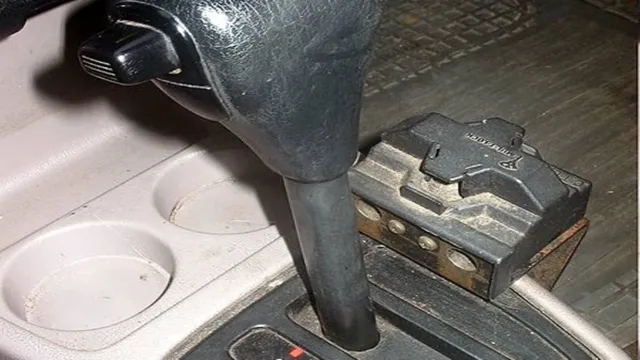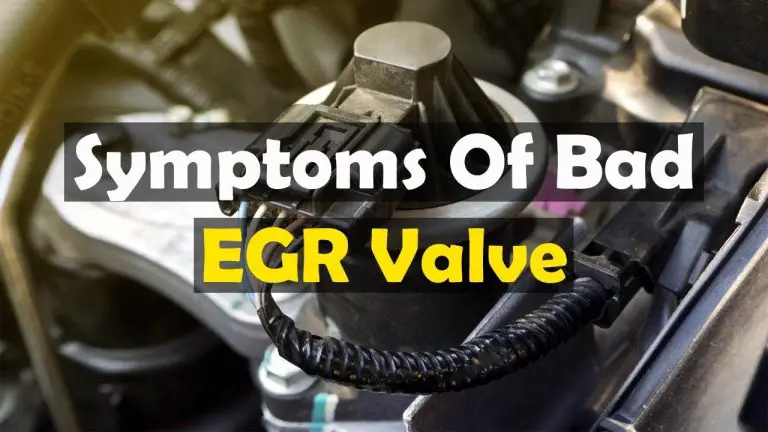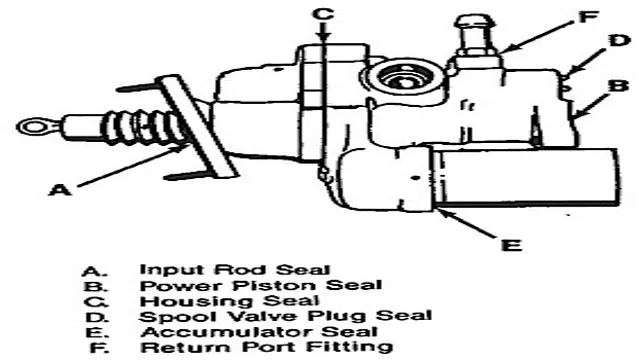Mastering the Art of Safely Adjusting the Neutral Safety Switch: Your Ultimate Guide
Have you ever experienced difficulty starting your vehicle because of a faulty Neutral Safety Switch? Well, worry no more because in this step-by-step guide, we will show you how to adjust the Neutral Safety Switch and restore your vehicle’s smooth and effortless starting. The Neutral Safety Switch is a crucial component in your vehicle, responsible for preventing the engine from starting unless it is in Park or Neutral. However, frequent use or wear and tear can cause the switch to malfunction, making it difficult to start the engine or even leading to accidents.
By following this guide, you will learn how to adjust the Neutral Safety Switch and avoid unnecessary expenses from hiring a mechanic. So, grab your tools and let’s get to work.
What is a Neutral Safety Switch?
A neutral safety switch is a crucial component of any vehicle’s transmission system. Its main purpose is to prevent the engine from starting while the transmission is not in the parking or neutral position. However, over time, the switch may become misaligned or damaged, causing problems with starting the vehicle or even allowing it to start in gear.
Adjusting the neutral safety switch may resolve these issues. To do this, you will need to locate the switch under the vehicle, loosen the mounting bolts, and move it until it is correctly aligned with the transmission’s gear selector. It is crucial to ensure that the switch is correctly adjusted to prevent any potential safety hazards.
By taking the time to adjust the neutral safety switch properly, you can help ensure a smooth driving experience and prevent any dangerous situations on the road.
Understanding the Function of a Neutral Safety Switch
A neutral safety switch is a crucial component in an automatic transmission vehicle’s safety system. It is essentially an electronic switch that detects the position of the gear selector and only allows the vehicle to start in “Park” or “Neutral.” This means that the engine is effectively disabled in all other positions, preventing the vehicle from accidentally lurching forward or backwards when the starter is engaged.
This is especially important in situations where a driver may inadvertently start the vehicle in gear, endangering themselves and others around them. The neutral safety switch also plays a key role in enabling other engine functions, such as reverse lights, to operate properly. Without this safety measure, a host of issues can arise, making it an essential part of any vehicle’s operation.
So, if you’re ever wondering why your car won’t start or your reverse lights won’t turn on, the neutral safety switch is a good place to start looking.

Steps to Adjust a Neutral Safety Switch
Are you having trouble starting your car? It might be an issue with your neutral safety switch. This important component ensures that your car can only start when it’s in Park or Neutral, preventing any accidents or damage. If you’re experiencing problems, it’s important to learn how to adjust the neutral safety switch.
Here’s a step-by-step guide to get you started. First, locate the switch underneath your car, usually near the shift lever. Then, loosen the mounting bolts and rotate the switch until the indicator on your dashboard shows the correct gear.
Once you’ve found the right position, tighten the bolts and test the switch to make sure it’s working properly. With these simple adjustments, you can get your car up and running smoothly again.
Step 1: Locate the Neutral Safety Switch
Adjusting a neutral safety switch is essential to ensure that your vehicle starts only in the park or neutral gear position. To make the adjustment, you need to locate the neutral safety switch, which is usually located on the side of the transmission. Look for a small lever or slide mechanism that connects to the shift linkage or shift cable.
Once you find the switch, make sure to disconnect the battery to prevent electrical shock or damage to the vehicle’s computer system. Next, engage the parking brake, and shift the transmission into the park position to access the switch. Now, loosen the bolts securing the switch to the transmission, and adjust the switch’s position until the indicator light or buzzer sounds when the gear shift is in park or neutral.
Finally, tighten the bolts, reconnect the battery, and test the vehicle to ensure that it starts only in park or neutral. With these simple steps, you can adjust the neutral safety switch and keep your vehicle safe and reliable.
Step 2: Identify the Type of Neutral Safety Switch
When it comes to adjusting a neutral safety switch, it’s important to take things step by step. The first step is to identify the type of switch you’re dealing with. Some switches are located on the transmission, while others are found on the steering column.
Once you know the location of your switch, you’ll need to determine if it’s adjustable or not. Some switches can be adjusted with a set screw or by moving the switch itself, while others are non-adjustable and will need to be replaced entirely. By taking the time to properly identify your neutral safety switch and understand its adjustability, you’ll be able to make the necessary adjustments to ensure the safety of your vehicle.
Step 3: Prepare for Adjustments
Adjust a Neutral Safety Switch After installing a neutral safety switch, it’s important to prepare for any necessary adjustments. The first step is to ensure that the switch is properly aligned with the shift selector of the transmission. If needed, loosen the mounting bolts and adjust the switch until it lines up correctly.
Next, test the switch to ensure that it is functioning properly. Place the shifter in park or neutral and attempt to start the engine. If the engine starts, the switch is working correctly.
If you cannot start the engine, try adjusting the switch until it is aligned properly. Finally, check the wiring to ensure that it is properly connected. Adjusting a neutral safety switch may take some trial and error, but with the proper tools and patience, you can ensure that your vehicle is safe to operate.
Step 4: Loosen the Neutral Safety Switch Mounting Bolts
Adjust Neutral Safety Switch Step 4 in adjusting a neutral safety switch involves loosening the mounting bolts of the switch. This step is crucial as it allows for the switch to be adjusted to the correct position. Once the bolts are loosened, the switch can be moved to its correct position while still providing enough room for play so that it operates properly.
Adjusting the switch to the correct position ensures that the vehicle starts only when it’s in “P” or “N” and prevents it from starting in any other gear. It’s important to note that when adjusting the switch, the gear selector must be in neutral, and the parking brake should be engaged. Tightening the bolts back will secure the switch in its optimal position, resulting in a properly operating neutral safety switch.
By taking these steps, you will ensure the safety of both the vehicle and its passengers.
Step 5: Adjust the Neutral Safety Switch
Adjust a Neutral Safety Switch In order to adjust the neutral safety switch, you will need to locate it under the hood of your vehicle. It is usually located on the side of the transmission, and it is responsible for preventing the engine from starting when the transmission is not in the neutral or park position. To adjust the switch, you will first need to disconnect the wiring harness that is connected to it.
Then, use a wrench to loosen the mounting bolts that hold the switch in place. Once the switch is loose, move it back and forth until you find the position where the engine starts only in park or neutral. Once you have found this position, retighten the mounting bolts and reconnect the wiring harness.
Make sure to test the switch a few times to ensure that it is properly adjusted. Adjusting the neutral safety switch is an important task that ensures your vehicle’s safety and proper functioning.
Step 6: Tighten the Mounting Bolts
Once you have properly adjusted the neutral safety switch, it’s important to tighten the mounting bolts securely. This will ensure that the switch stays in place and doesn’t shift around, which could cause it to malfunction. Use a wrench or socket to tighten the bolts, making sure not to over-tighten them and risk stripping the threads.
It’s a good idea to double-check the switch’s position and make any necessary adjustments before fully tightening the bolts. Once everything looks and feels good, give the bolts one last tautening to lock the switch firmly in place. With the neutral safety switch properly adjusted and securely mounted, you can be confident that your vehicle will start safely and reliably every time you turn the key.
When to Adjust Neutral Safety Switch?
If you have noticed that your vehicle isn’t starting or that it is starting in gear, it may be time to adjust the neutral safety switch. The neutral safety switch is responsible for preventing the engine from starting when the vehicle is in any gear other than park or neutral. To adjust the switch, first, locate it by referring to your vehicle’s manual or by researching its location online.
Once you have located it, you can adjust it by loosening the bolts that hold it in place and adjusting its position until it lines up with the gear selector. This adjustment may take some trial and error, so be patient and test the switch after every adjustment to ensure that the problem has been resolved. Always remember to follow the manufacturer’s instructions and safety guidelines when making any adjustments to your vehicle’s components to avoid any injury or damage to your vehicle.
Signs That Your Neutral Safety Switch Needs Adjustment
The neutral safety switch is a crucial component in ensuring the safety of your vehicle. It’s responsible for preventing the car from starting unless the transmission is in park or neutral. If you’re experiencing problems starting your vehicle or it’s starting in gear, it may be time to adjust your neutral safety switch.
Other signs that may indicate the switch needs adjustment include your car stalling when you shift into gear or your reverse lights not turning on when you shift into reverse. Adjusting the switch involves locating it, making sure it’s properly aligned, and tightening any loose bolts. Ignoring these warning signs can lead to serious accidents, so it’s important to have the switch inspected and adjusted by a professional mechanic.
Don’t take chances when it comes to your safety, have your vehicle checked today!
Importance of Proper Adjustment
The neutral safety switch is an important component of your vehicle’s transmission system that prevents it from starting while in gear. It’s essential to make sure that your switch is properly adjusted, as failure to do so can be dangerous and result in accidents. So when should you adjust your switch? If your vehicle starts in gear or doesn’t start at all despite being in the Park position, it’s highly likely that your neutral safety switch needs to be adjusted.
It’s crucial to take your car to a reliable mechanic and have them check and adjust the switch to ensure that everything is in proper working order. Don’t take chances with your safety and the safety of others while on the road. A malfunctioning neutral safety switch can cause unpredictable behavior and could result in accidents.
Make sure to have it checked and adjusted regularly to prevent any untoward incidents on the road.
Final Thoughts and Precautions
Adjusting the neutral safety switch in your vehicle is a crucial task that requires proper attention and care. While it may seem like a daunting and time-consuming task, following the right steps can make it easy and hassle-free. First, ensure that your vehicle is in park or neutral before starting the process.
Locate the switch on your transmission and detach the electrical connector gently. Next, loosen the mounting bolts and adjust the switch to the desired position, ensuring that the engine starts only in park or neutral. Finally, verify the switch’s operation by checking the dash lights and testing the vehicle’s starting ability.
Remember to always take the necessary safety precautions, such as disconnecting the battery and following the manufacturer’s instructions. By doing so, you can ensure that your vehicle operates smoothly and safely. So, don’t hesitate to give it a try and see the difference it makes in your driving experience!
Conclusion
Well, adjusting a neutral safety switch is not exactly rocket science, but it does require some technical know-how. In essence, it’s a matter of finding that sweet spot between safety and functionality so that your vehicle starts reliably and only in the correct gear. So, if you’re feeling up for the challenge, grab your tools, your sense of adventure, and find your neutral ground.
After all, the only thing better than a well-functioning neutral safety switch is a well-functioning neutral safety switch adjusted with a bit of wit and cleverness.”
FAQs
What is a neutral safety switch and what does it do?
A neutral safety switch is a safety device that prevents a vehicle from starting unless the shifter is in the “park” or “neutral” position.
How do I know if my neutral safety switch is faulty?
One sign of a faulty neutral safety switch is that the engine will not start when the shifter is in the “park” or “neutral” position. Another sign is that the engine will start when the shifter is in a gear other than “park” or “neutral”.
Can I adjust my neutral safety switch myself?
Yes, in some cases, the neutral safety switch can be adjusted. However, it’s important to consult your vehicle’s manual for specific instructions on how to adjust it properly.
What tools do I need to adjust my neutral safety switch?
The tools required to adjust a neutral safety switch can vary depending on the make and model of your vehicle. However, some common tools that may be required include a wrench, a socket set, and a screwdriver.





